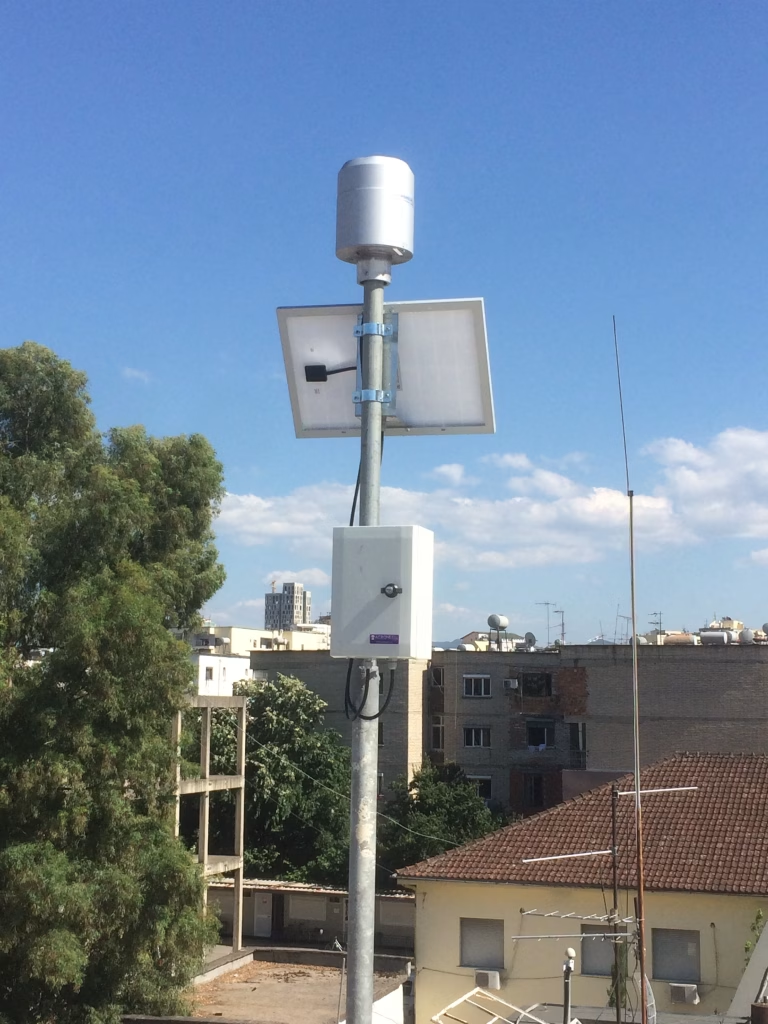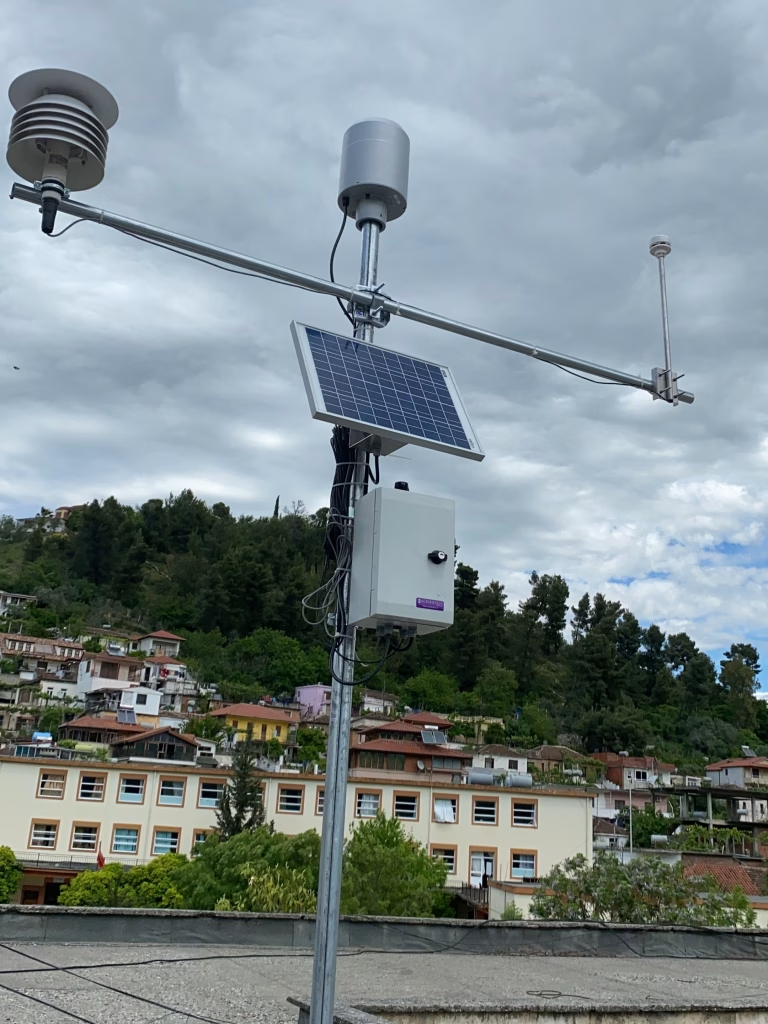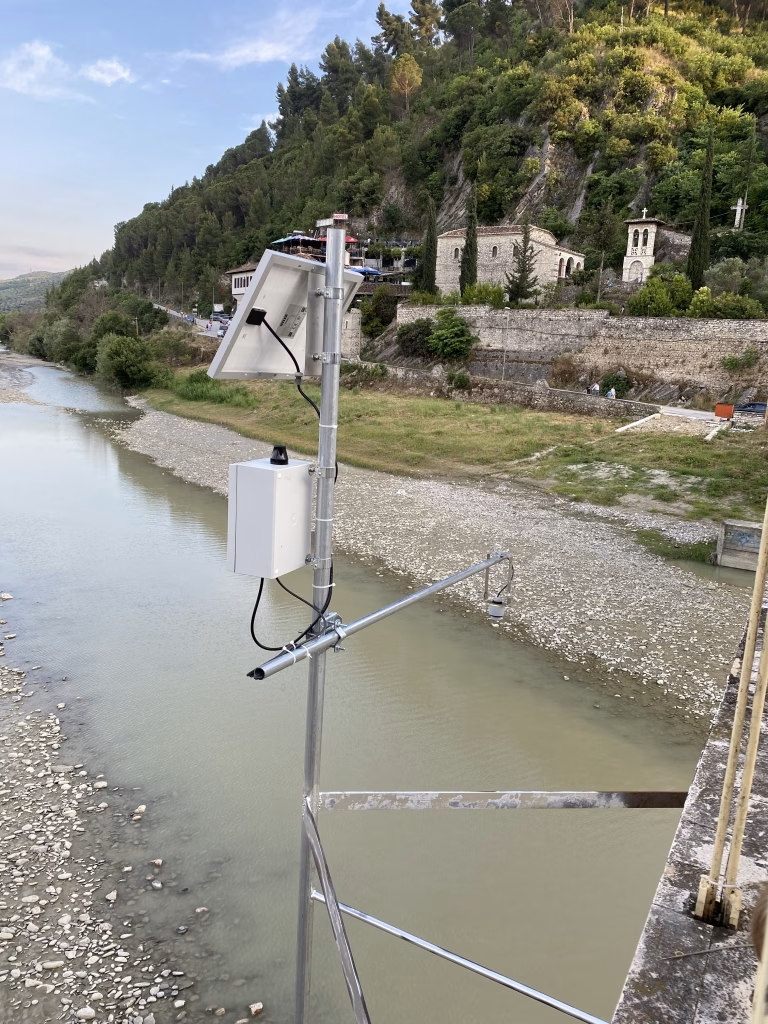In the heart of Albania, where the Osum River flows through gorges and mountains, environmental monitoring takes on a new technological dimension. The installation of the new complete weather station in Berat, the latest to become operational within the ACRONET network, marks the completion of the country’s first infrastructure designed according to principles of data sharing and sustainability.
Equipped with a rain gauge, thermo-hygrometer, and anemometer, the Berat station integrates with the rain gauge in Tirana and the hydrometric stations in Çorovodë and Berat, creating a network capable of observing meteorological and hydrological processes in real time.
This step forward goes beyond technology itself: networking data means networking knowledge, providing communities with concrete tools to better understand and manage the natural phenomena that affect them.

The ACRONET paradigm: an open-hardware architecture
ACRONET, developed by the CIMA Research Foundation, is much more than a sensor network. It is a technological and scientific paradigm based on a modular and scalable architecture, integrating custom-designed data loggers capable of interfacing with a wide range of sensors, in accordance with open-hardware and low-cost principles. This approach enables the creation of flexible observation networks, adaptable to different contexts, capable of collecting and transmitting meteorological, hydrological, and environmental data in real time. Each node in the network becomes part of an intelligent system of collective knowledge, where field observations interact with numerical modeling and decision-support systems for civil protection.
Today, ACRONET is a global network, with active installations in several countries around the world. From Italy to Albania, from Africa to South America (see
With 245 installations online, 50 different configurations, 20 measured parameters, and over 347,000 real-time daily samples, ACRONET today represents a widespread and versatile environmental monitoring infrastructure, capable of generating a continuous flow of knowledge to support scientific research and risk management policies.
“ACRONET represents an innovative vision of environmental monitoring,” explains Cosimo Versace, Director of the Technological Development Program at the CIMA Research Foundation. “It is a technology born to be open, adaptable, and shareable. Each installation is a piece of a growing network—one that connects territories and delivers reliable data to prevent and manage risk in increasingly informed ways.”
From research to the field: the Albanian network as a cooperation laboratory
The network installed in Albania is the result of a technical-scientific collaboration that brought together expertise and shared vision. The CIMA Research Foundation has been actively working in Albania for several years through its branch office in Tirana, where it carries out research, training, and international cooperation activities in the fields of risk management and environmental monitoring.
This stable presence in the country allows for a continuous dialogue with institutions and local partners, strengthening prevention and response capacities to natural and hydro-meteorological risks.
Through the ACRONET infrastructure, local observations are now integrated with advanced modeling systems, improving forecasting capabilities and supporting authorities in emergency management. Real-time data collection allows continuous tracking of meteorological and hydrological conditions, helping to enhance the resilience of communities exposed to risks.
As Federico Siccardo, researcher at the CIMA Research Foundation, points out: “Installing an ACRONET network means bringing research directly into the field—transforming science into concrete action. Each sensor represents a connection point between knowledge and territory, between forecasting and response. In Albania, we have created a model that can be replicated elsewhere, adapting it to the specific characteristics of each river basin.”




A replicable model for environmental monitoring
The Albanian network represents a real-world laboratory for testing a replicable paradigm. The ACRONET model can indeed be extended to different contexts—from urban hydro-meteorological systems to mountain regions, from landslide-prone areas to floodplains. Its flexible and interoperable architecture makes it possible to develop integrated observation networks that interact with early warning systems and risk management platforms.
Today, the ACRONET network in Albania, covering the Osum River basin, is complete and fully operational: an open-data infrastructure, a shared knowledge system, and a tangible example of how scientific innovation can translate into safety for people and the environment.
A significant step forward on the path toward more informed, more resilient, and more aware communities in the face of climate change and the risks it brings.
